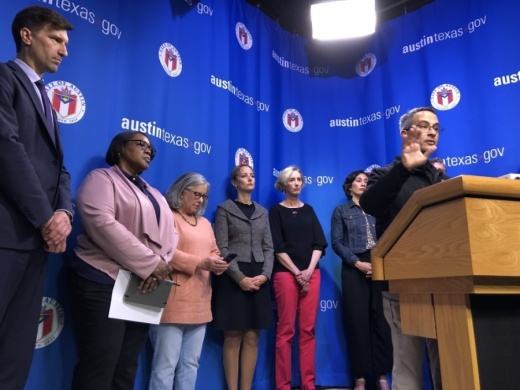According to a CDC report published April 8 tracking 580 coronavirus hospitalizations in which racial and ethnic data was available from March 1-30, 33% of hospitalized patients were black, much higher than the 12.7% of the American population who is black.
A report from the Pew Research Center published April 14 shows that 15% of the American population knows someone who has been hospitalized or died as a result of the coronavirus, but among black adults that rate is 27%.
Austin and Travis County health officials are not sharing race or ethnicity information with the public when it comes to hospitalizations and deaths, but Austin-Travis County interim Health Authority Dr. Mark Escott said he expects those statistics to be available by the end of the week.
Escott said health officials want to be transparent with the public because they understand communities of color and low-income communities have a disadvantage in accessing health care services.
“We want to be as transparent as we can, because we, too, are concerned about the effect on minorities in our community,” Escott said.
The city and county are sharing race and ethnicity data for all positive coronavirus cases. According to data updated April 13, 78% of all positive cases have been white individuals, 10% black and 4% Asian, with the remaining cases classified as "other" or "unknown." According to the data, 37% of those who have tested positive are of Hispanic ethnicity.
Those numbers track pretty closely to Austin’s overall racial and ethnic demographics. According to U.S. Census five-year estimates from 2018, the city is 73.5% white, 7.8% black and 7.3% Asian—the remaining 11.4% is classified as either American Indian and Alaska Native alone, some other race or two or more races. Ethnicity data shows that 34.3% are Hispanic or Latino—Hispanic individuals can be of any race, according to the census.
While racial and ethnic disparities have not shown up in the coronavirus data yet, Ted Burton, Central Health vice president of communications, said the Travis County health care district is working to make sure it reaches communities of color and low-income communities with underlying conditions that make them more susceptible to the virus.
Some of the strategies to reach those communities, Burton said, include follow-up calls with patients who test positive at CommUnityCare clinics, partnering with the Central Texas Food Bank to deliver items to those food-insecure individuals who need to self-quarantine, compiling a list of resources for communities in eastern Travis County and finding alternative ways to reach individuals who do not have internet access.
Even though racial and ethnic disparities do not show up in the coronavirus data locally yet as they have in other areas of the country, Escott said officials need to keep at-risk individuals in low-income communities and communities of color at the forefront—even when the pandemic passes.
“We know these communities are going to be more heavily impacted, and we want to make sure everybody understands that. We are at some stage going to move on from COVID-19, but those inequities are going to be there, and we have to work hard to address those issues,” he said.
Correction: In the original version of this story, Central Health vice president of communications Ted Burton was misattributed as Ted Foster.





